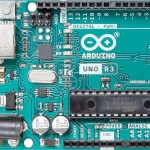With the cryptocurrency market turning to the upside, investors are always looking for the high-profit gem they can hold to the top. While Bitcoin and Ethereum are sure values, they don’t present that high of profit potential.
In this article, we make an HBAR vs VET comparison, as these two projects have had similar price histories. Hedera and Vechain made significant profits during the previous bull run, and their communities still believe they can leave a mark in the industry going forward.
However, even though their price action might look similar, these blockchains differ significantly in terms of technology. To help you make an informed choice, we analyze their fundamentals and price history and provide some price predictions compiled from internet analysts.
HBAR Vs VET: Purpose
Hedera and Vechain have similar purposes. They have been created to provide users with scalable platforms for deploying smart contracts and deploying decentralized applications.
That said, while Hedera is more of a run-of-the-mill platform, Vechain has always been considered a blockchain specifically aimed at disrupting real-world industry sectors. In this regard, Vechain is aimed at providing the supply chain industry with an open-source platform for logistics, tracking, IoT, and optimization solutions through decentralization.
Their purpose is easy to compare, unlike when comparing L2 to L1 chains like MATIC to KLAY.
HBAR vs VET: Technology
Hedera and Vechain differ the most in their underlying technology. Vechain uses a modified Ethereum structure for its PoS consensus, which is pretty common in the industry. Hedera, on the other hand, uses a technology named hashgraph. In contrast to a standard blockchain, this network doesn’t use the concept of cryptographic blocks.
Instead, the hash graph is a distributed consensus algorithm that provides a much more scalable network with higher throughput and low transaction and energy costs.
Both tokens, HBAR and VET, are used in the staking mechanism to ensure the chain is secured from malicious attacks. Also, both networks provide easy tokenization of fungible and non-fungible assets (NFTs).
Vechain relies on a double token system, where VET is the main value and staking asset, while VETHO is used for paying for gas on the chain. In contrast, Hedera only uses HBAR for staking, gas, and value transactions.
HBAR vs VET: Marketing Analysis
Vechain is the veteran between the two, as it came out in 2017, whereas Hedera went live in 2019. VET didn’t benefit from the 2017-2018 bull market and only reached its $0.27 all-time high in 2021. Hedera reached $0.57 in the same period, although the price difference is understandable as the maximum supply of HBAR is 35% smaller than VET.
HBAR Price Prediction
Priceprediction.net is cautiously optimistic for HBAR in the short term. The website provides a maximum target of $0.089 for 2023. However, in the middle and long term, their predictions become much more bullish. For 2025, they expect HBAR to reach $0.2, whereas, for 2030, they predict a price of $1.30.
Digitalcoinprice.com aims a bit higher in the short term, with $0.14 for 2023. However, their long-term targets are more conservative: $0.23 for 2025 and $0.66 for 2030.
VET Price Forecast
For Vechain, Priceprediction.net doesn’t offer too much leeway on the upside. For 2023, the website predicts a price ceiling of $0.033 per token. For the long term, their forecasts are as follows: $0.10 for 2025 and $0.44 for 2030.
Digitalcoinprice.com is a bit more optimistic in the short term, with a price target of $0.05 for 2023. However, their targets for the long term are much more conservative, with $0.08 for 2025 and $0.24 for 2030.
HBAR vs VET: Try It Out
As you might have noticed, HBAR and VET are similar in their purpose but very different in the way they work. All in all, we can say that HBAR might be the stronger technology, providing long-term scalability to users. However, VET is the pioneer and has multiple high-profile partnerships in real-world industry sectors such as supply chain, automotive, and healthcare.
Both have similar upside potential, with HBAR probably having the edge.
















